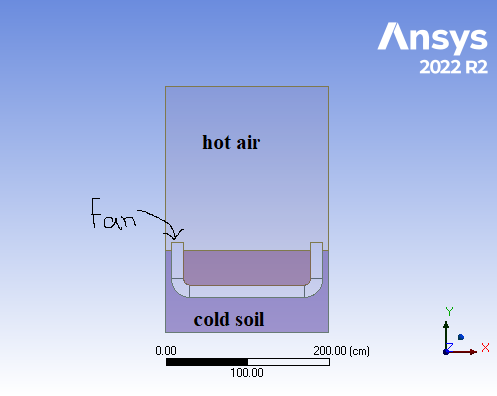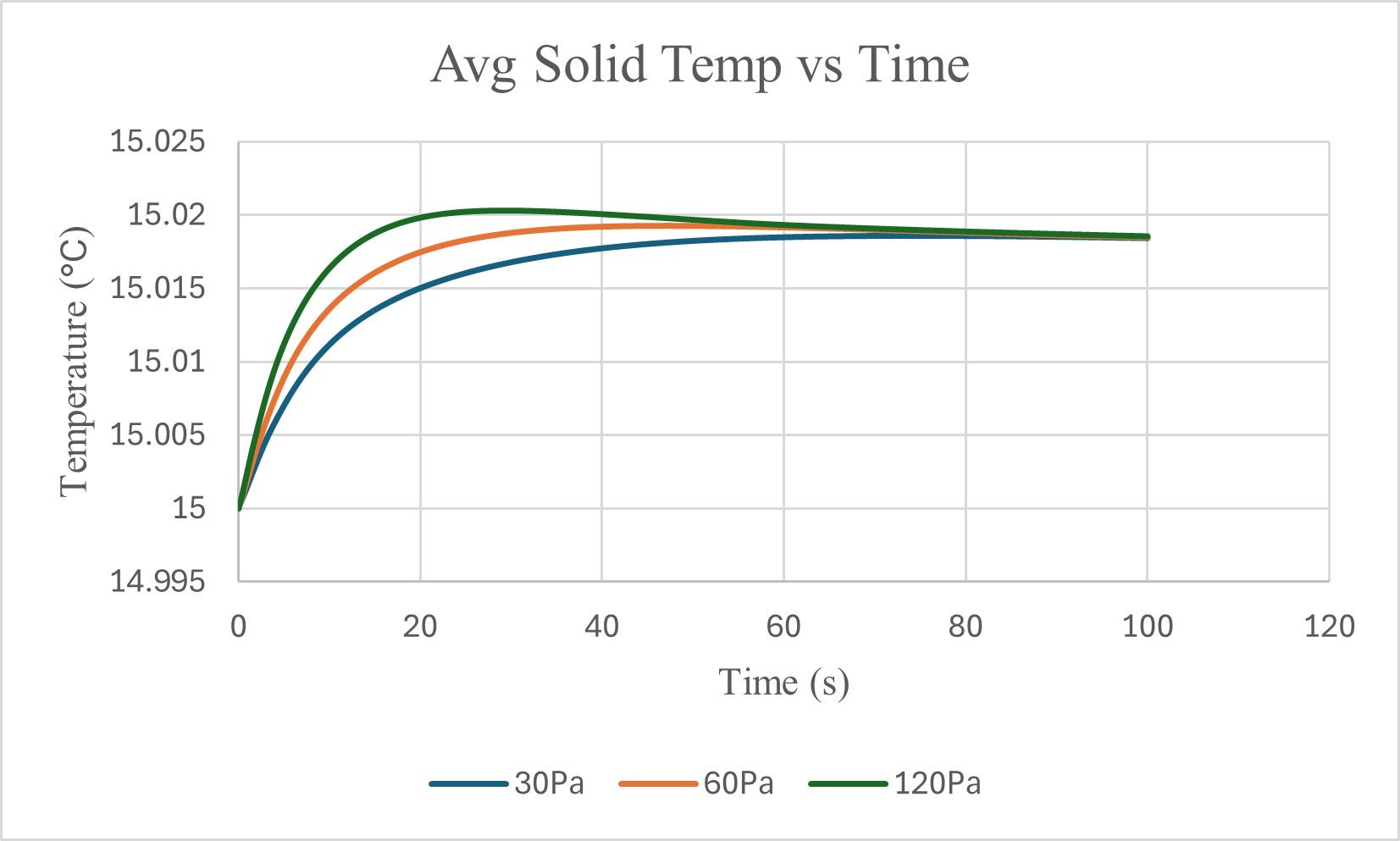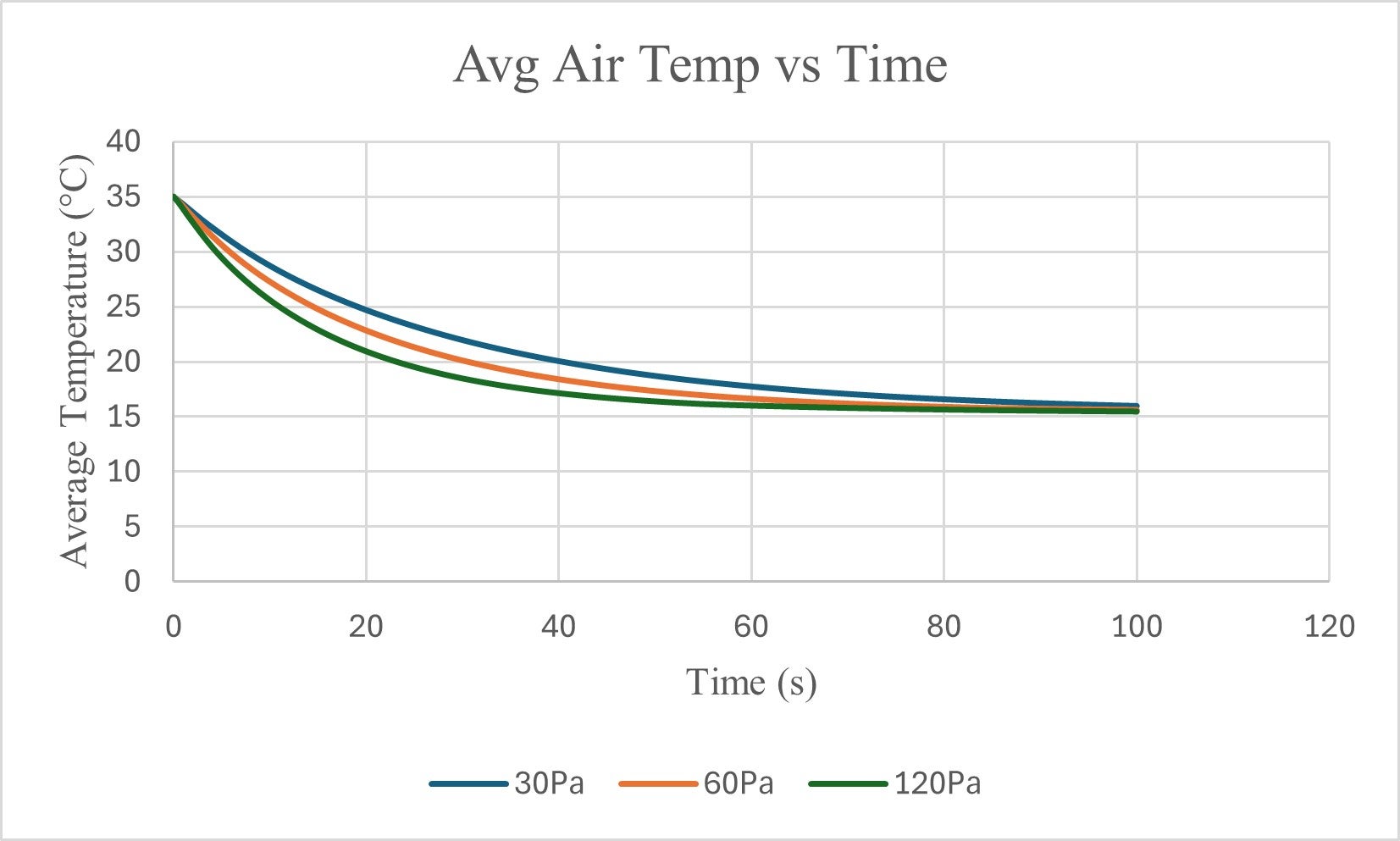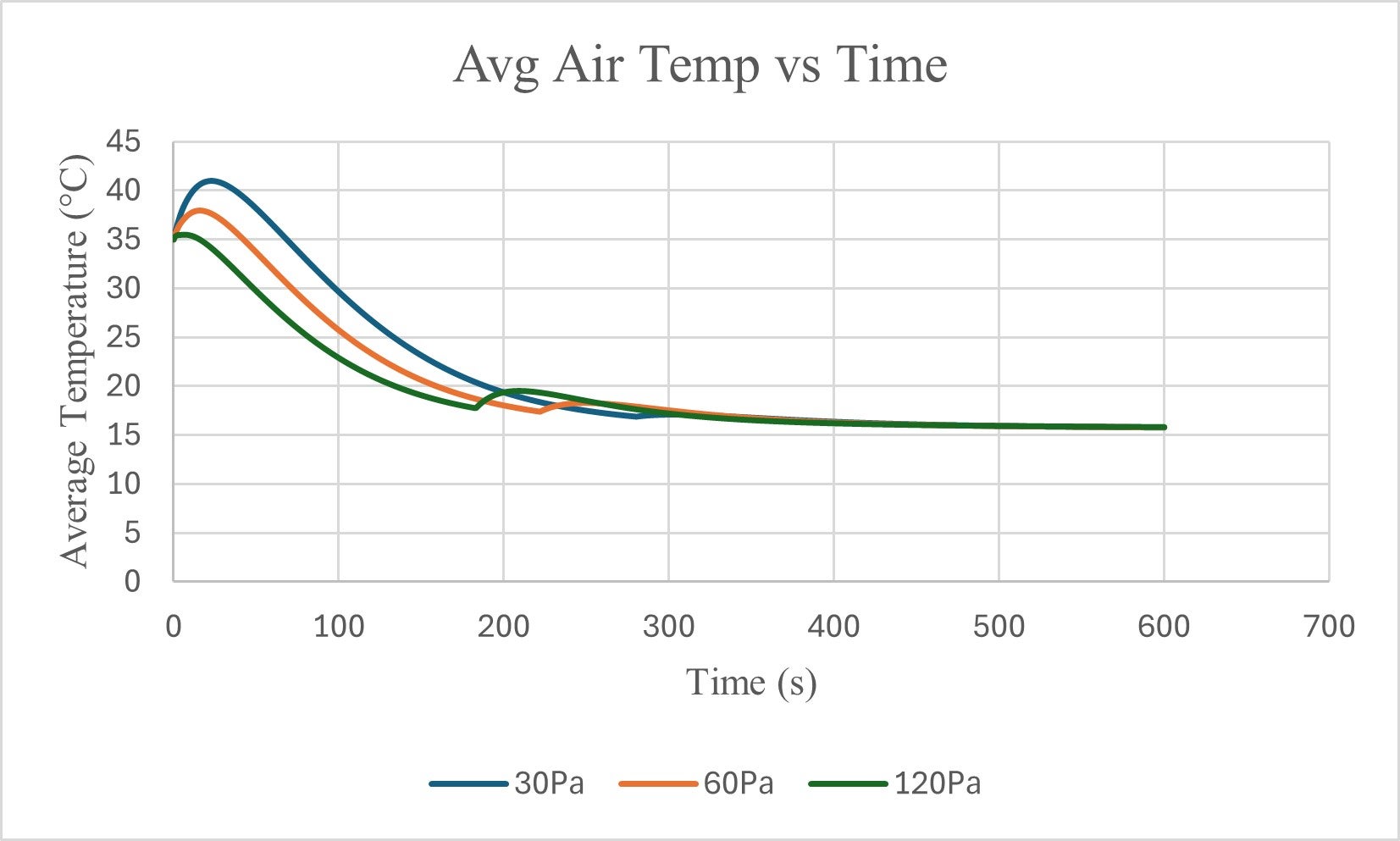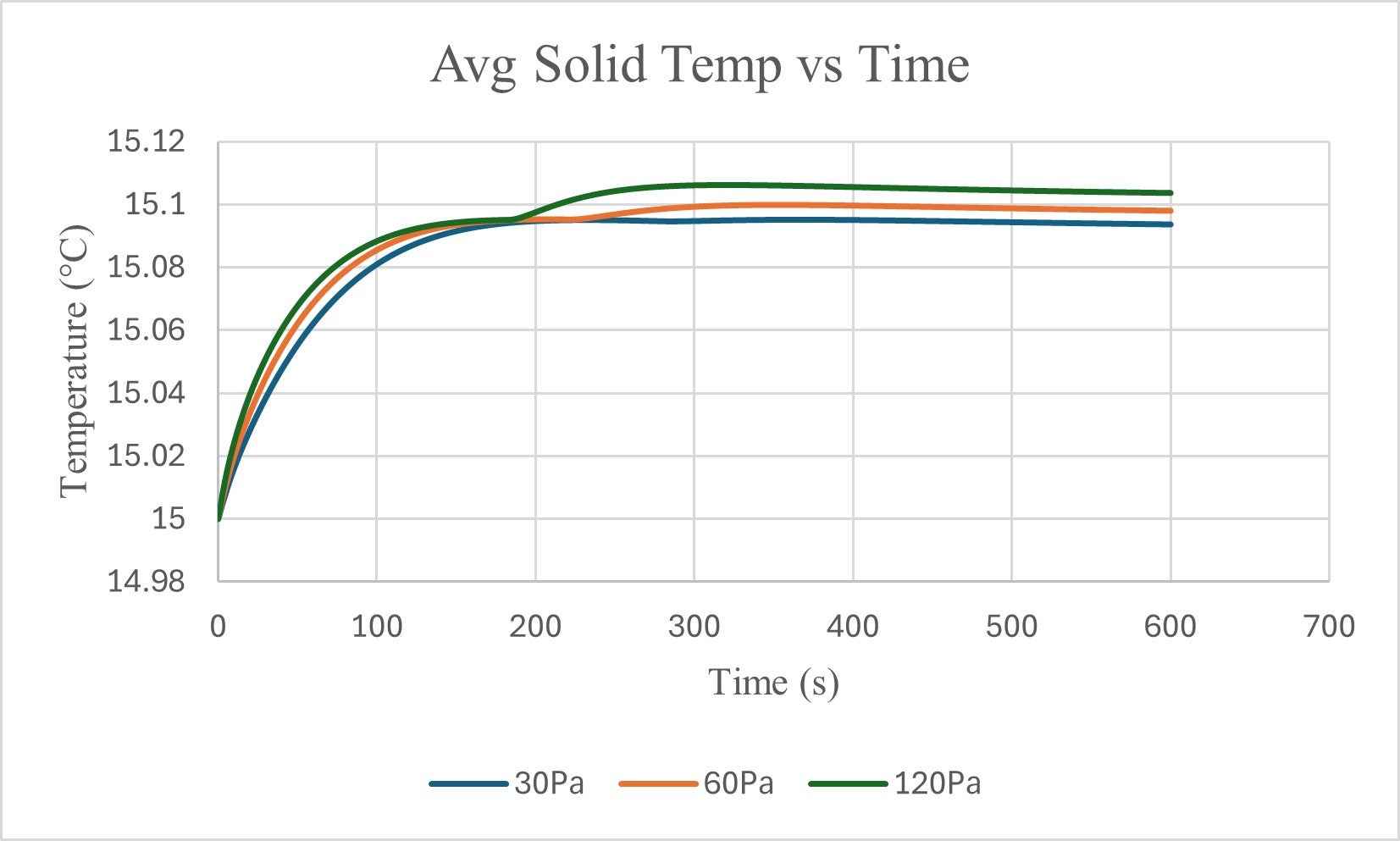-
-
August 22, 2024 at 9:53 am
Amir
SubscriberWe modeled the circulation of hot hot dry air through a pipe which is embeded under colder soil. air was circulated using an "internal fan" boundary condition for three different pressure jumps.
The plots of average temperatures shows that for higher fan pressure jumps, (initially) the air temperature drops faster but later reaches the same value as other pressure jumps. The avg temp of soil initially grows faster for higher pressure jumps, but later reaches the same value. what is the reason for this? Is this because higher pressure jump (higher fan velocity) [initially] speeds up the heat transfer by better circulation? Any other reason?
-
August 22, 2024 at 10:51 am
Rob
Forum ModeratorHigher flow will mean a higher HTC (usually) but also more mass to carry heat away. If the domain is sealed (ie adiabatic surrounds) then the temperature should reach the same value eventually as the heat can't go anywhere.
-
August 22, 2024 at 2:00 pm
-
-
August 22, 2024 at 2:30 pm
Rob
Forum ModeratorNot really - have a look at the flow data (images etc) so see what's going on.
-
- You must be logged in to reply to this topic.



-
4858
-
1587
-
1386
-
1242
-
1021

© 2026 Copyright ANSYS, Inc. All rights reserved.

